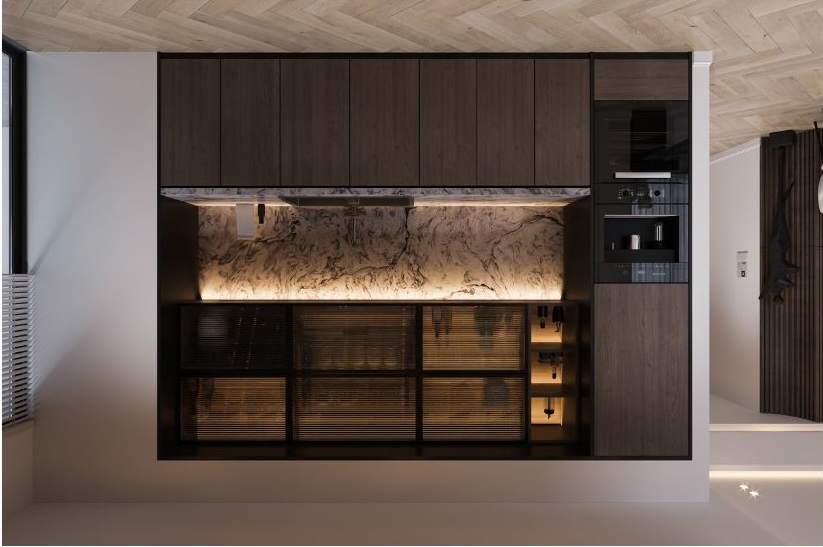In today’s fast-paced world, the kitchen is no longer just a place for cooking—it has evolved into a multifunctional space for dining, socializing, and working. As technology continues to advance, the concept of the “smart kitchen” is gaining traction, transforming how we cook, eat, and interact in our homes. Smart kitchens are designed to offer convenience, efficiency, sustainability, and a touch of luxury by integrating state-of-the-art appliances, gadgets, and digital solutions.
This blog explores the role of smart kitchens in modern homes, the latest technologies driving this trend, the benefits they offer, and how to incorporate smart features into your own kitchen.
1. What is a Smart Kitchen?
A smart kitchen is a kitchen that utilizes modern technology to enhance cooking efficiency, safety, and convenience. It integrates smart appliances, devices, and systems that can be controlled remotely or through voice commands using smart home assistants like Amazon Alexa, Google Assistant, or Apple HomeKit. These technologies allow homeowners to automate tasks, monitor energy usage, receive recipe suggestions, and even order groceries.
Smart kitchens combine connectivity, artificial intelligence (AI), the Internet of Things (IoT), and energy-efficient design to create a highly functional, personalized, and sustainable environment.
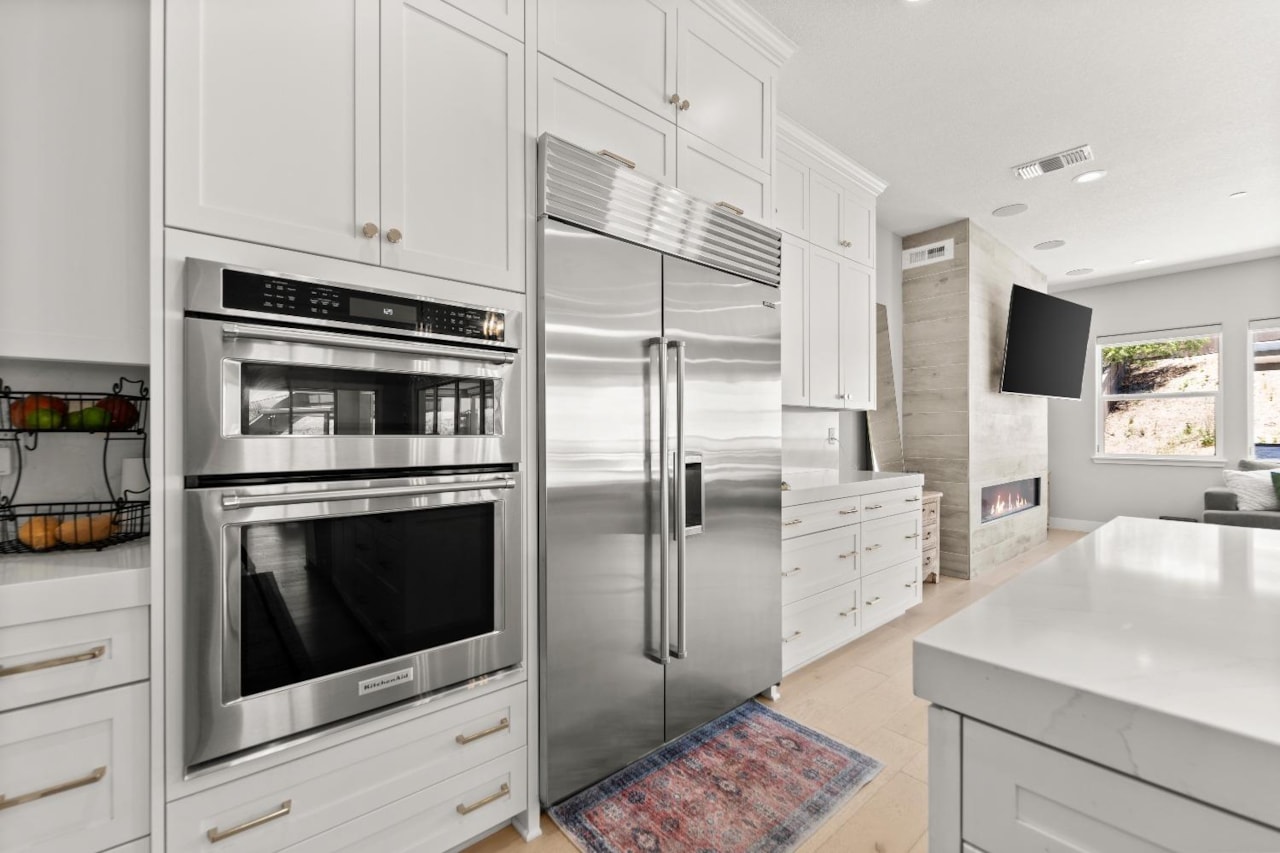
2. Key Features of a Smart Kitchen
Smart kitchens come equipped with various features that make them unique and highly efficient. Here are some key elements that define a smart kitchen:
a. Smart Appliances:
Smart appliances are the cornerstone of a smart kitchen. They are equipped with sensors, connectivity, and AI capabilities that allow users to control them remotely, receive notifications, and even get cooking suggestions. Some popular smart appliances include:
- Smart Refrigerators: Equipped with touchscreens, cameras, and Wi-Fi connectivity, smart refrigerators allow you to see what’s inside without opening the door, suggest recipes based on available ingredients, and even track expiration dates.
- Smart Ovens and Cooktops: These appliances can be controlled remotely via smartphone apps, allowing users to preheat the oven, set timers, and monitor cooking progress from anywhere. Some smart ovens also come with voice control and guided cooking features.
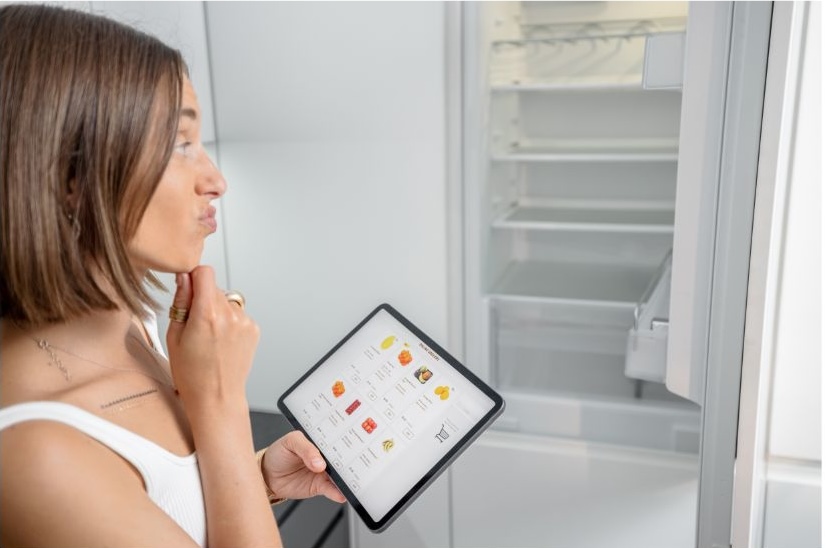
- Smart Dishwashers: Smart dishwashers can be programmed to run at specific times, monitor water usage, and provide maintenance alerts. They are also designed to optimize cleaning cycles based on load size and soil level.
- Smart Coffee Makers: These devices can be programmed to brew coffee at a specific time, customized to your preferred strength and flavor, all from the comfort of your bed.
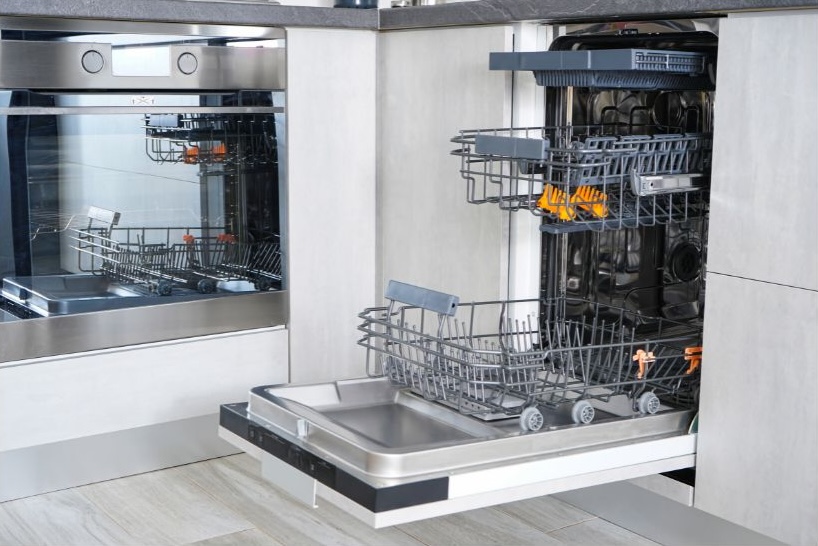
b. Voice Control and Automation:
Voice control is a game-changer in smart kitchens. Integration with smart home assistants allows users to control kitchen appliances with simple voice commands, such as turning on the oven, adjusting the thermostat, or playing music while cooking. Automation features, such as setting schedules for appliances or creating “scenes” (e.g., “Cooking Mode” or “Dinner Party Mode”), add another layer of convenience.
c. Energy Efficiency and Sustainability:
Smart kitchens are designed with sustainability in mind. Smart appliances are energy-efficient, helping to reduce energy consumption and lower utility bills. Many smart refrigerators and dishwashers come with eco-friendly modes that use less water and electricity. Additionally, smart lighting and smart thermostats help maintain optimal energy usage in the kitchen.
d. Smart Faucets and Water Management:
Smart faucets provide touchless operation, voice control, and precise water dispensing features. They can be programmed to pour a specific amount of water (e.g., 1 cup) and even adjust temperature settings. Water sensors can also detect leaks and send alerts, helping to conserve water and prevent damage.
e. Digital Kitchen Assistants and Recipe Apps:
Smart displays, tablets, and digital kitchen assistants are becoming popular in modern kitchens. They provide step-by-step recipe guidance, cooking videos, and nutritional information, making meal preparation more interactive and fun. Some apps can even suggest recipes based on dietary preferences or available ingredients.
f. Smart Storage Solutions:
Smart storage solutions, such as temperature-controlled cabinets and drawers, help keep ingredients fresh and organized. Smart pantries can track inventory and notify you when you’re running low on essential items, reducing food waste and ensuring you always have what you need.
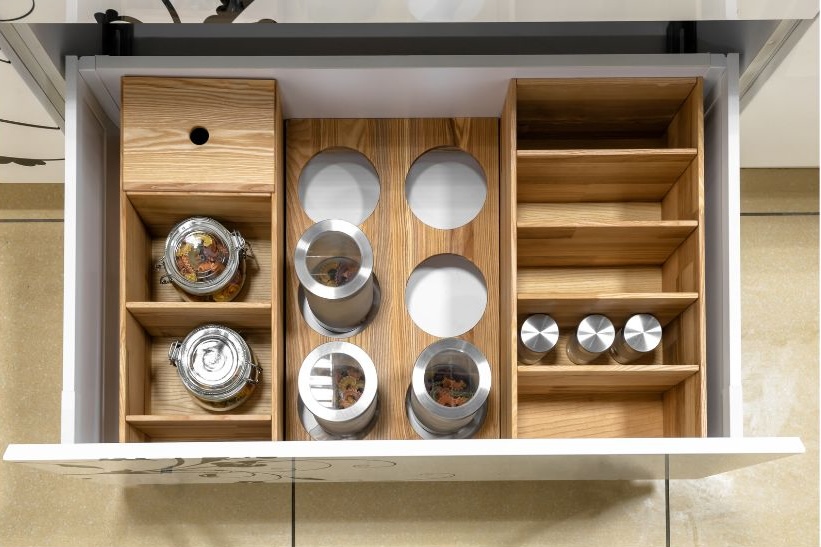
3. Benefits of Smart Kitchens in Modern Homes
Smart kitchens offer a wide range of benefits that make them an appealing choice for homeowners looking to upgrade their cooking spaces. Here are some key advantages:
a. Convenience and Time-Saving:
Smart kitchens simplify everyday tasks and save time by automating processes. You can preheat your oven while on your way home, get notifications when your food is ready, or receive cooking instructions tailored to your needs. This level of convenience is especially valuable for busy families and professionals.
b. Improved Cooking Experience and Skills:
Smart appliances and digital kitchen assistants provide guided cooking experiences, helping even novice cooks prepare delicious meals with ease. Features like temperature sensors, cooking timers, and recipe apps ensure that dishes are cooked to perfection every time.
c. Enhanced Safety and Security:
Smart kitchens are equipped with safety features such as automatic shut-off, smoke and gas leak detectors, and child safety locks. These features help prevent accidents and provide peace of mind, especially in homes with young children or elderly family members.
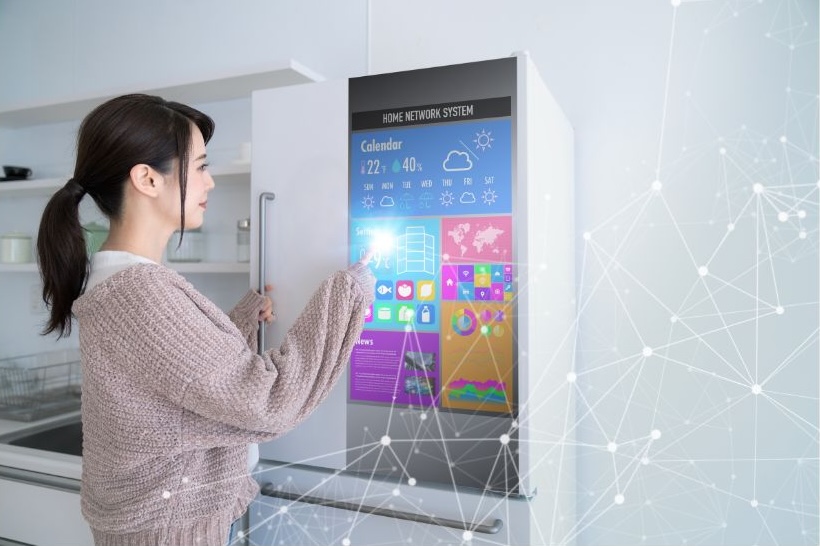
d. Energy Efficiency and Cost Savings:
Smart appliances are designed to be energy-efficient, which can lead to significant cost savings on electricity and water bills. Smart thermostats and lighting further optimize energy usage, reducing your overall carbon footprint and promoting a more sustainable lifestyle.
e. Better Organization and Inventory Management:
With smart storage solutions and connected refrigerators, keeping track of groceries and managing inventory is easier than ever. These features help reduce food waste, save money on groceries, and ensure you always have fresh ingredients on hand.
f. Enhanced Entertainment and Social Interaction:
Smart kitchens can also be hubs for entertainment and social interaction. Integrated speakers, smart displays, and voice assistants can play music, stream videos, or set the mood for a dinner party, making the kitchen a central gathering place for family and friends.
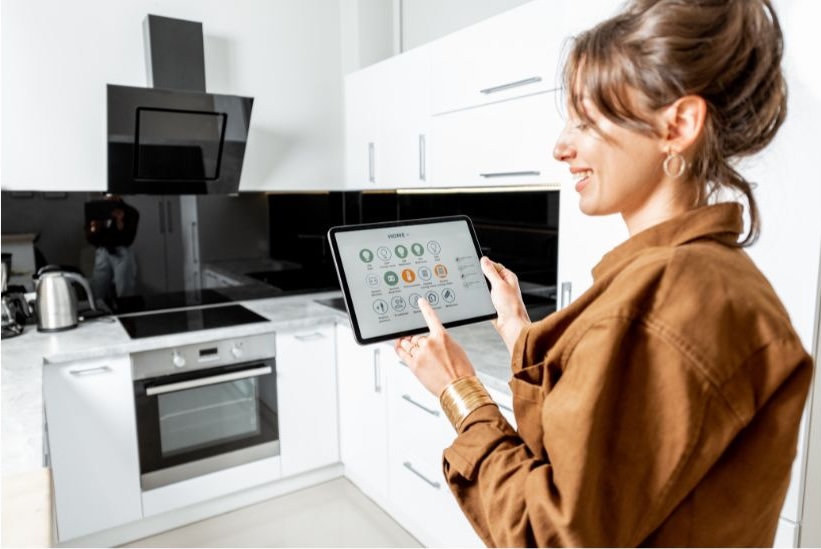
4. How to Incorporate Smart Features into Your Kitchen
Transforming your kitchen into a smart kitchen doesn’t necessarily mean a complete overhaul. You can start small and gradually add smart features that align with your needs and budget. Here’s how to get started:
a. Start with Smart Appliances:
Invest in a few key smart appliances that provide the most value for your lifestyle. A smart refrigerator, oven, or dishwasher can make a significant difference in daily convenience and efficiency. Choose appliances that are compatible with your existing smart home system for seamless integration.
b. Add Smart Lighting and Thermostats:
Smart lighting and thermostats are relatively easy to install and offer immediate benefits. Smart LED bulbs and fixtures can be controlled remotely or via voice commands, allowing you to adjust the lighting based on the time of day or activity. Smart thermostats help maintain a comfortable kitchen environment while optimizing energy usage.

c. Upgrade to Smart Faucets and Water Sensors:
Consider upgrading to smart faucets that provide touchless operation and water-saving features. Pair them with water leak sensors to monitor water usage and detect potential leaks, helping to conserve water and prevent damage.
d. Integrate Smart Displays and Kitchen Assistants:
Smart displays and kitchen assistants, such as Google Nest Hub or Amazon Echo Show, can serve as your digital sous-chef. They provide access to recipes, cooking videos, timers, and music streaming, making the cooking experience more interactive and enjoyable.
e. Optimize with Smart Storage Solutions:
Implement smart storage solutions like temperature-controlled cabinets, pull-out shelves, and smart pantry systems to keep your kitchen organized and efficient. These solutions help reduce food waste and ensure that ingredients are always fresh and easily accessible.
f. Use Smart Plugs and Outlets:
Smart plugs and outlets can turn any kitchen appliance into a smart device. They allow you to control devices remotely, set schedules, and monitor energy usage. This is a cost-effective way to integrate smart features into your kitchen without replacing all your appliances.
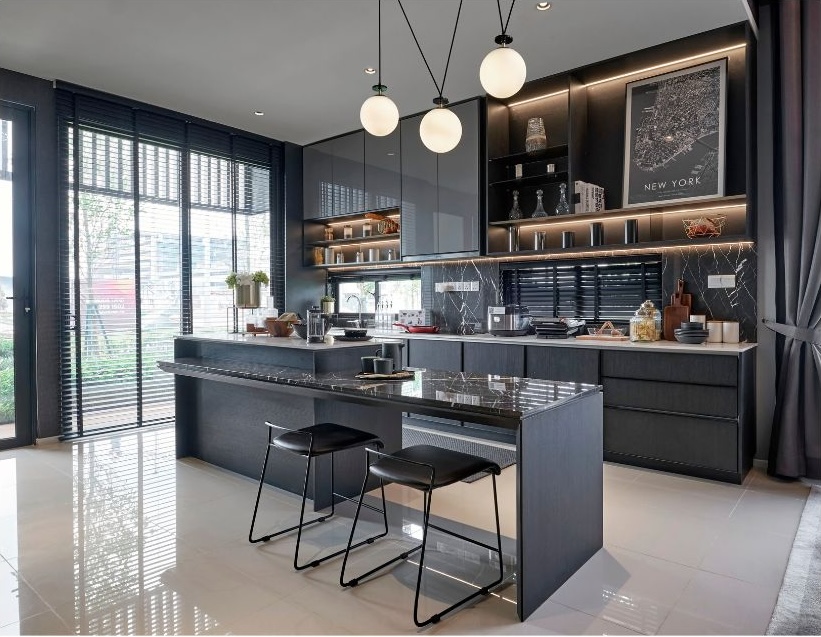
5. Future Trends in Smart Kitchens
The smart kitchen trend is evolving rapidly, with new technologies and innovations continually emerging. Here are some future trends to watch for in smart kitchens:
a. Artificial Intelligence and Machine Learning:
AI and machine learning will play a larger role in smart kitchens, enabling appliances to learn user preferences, predict cooking needs, and provide more personalized experiences. AI-driven recipe recommendations, meal planning, and voice-activated cooking instructions are just a few possibilities.
b. Integration with Health and Wellness:
Future smart kitchens will likely focus more on health and wellness, offering features like nutrient tracking, dietary advice, and personalized meal plans based on health data. Smart appliances may integrate with wearable fitness devices to provide a more holistic approach to health management.
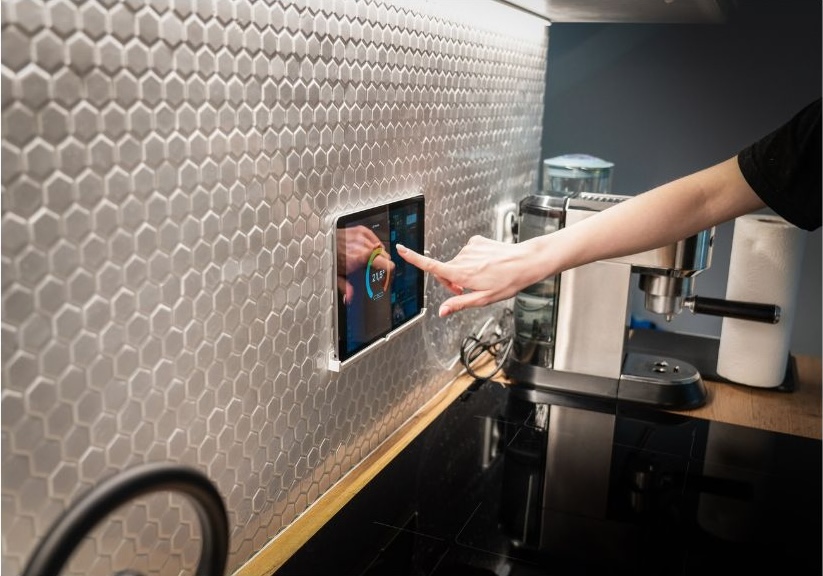
c. Augmented Reality (AR) and Virtual Reality (VR) Cooking Guides:
AR and VR technology could soon be used to provide interactive cooking guides, allowing users to see step-by-step instructions overlaid in their real kitchen space. This would enhance the cooking experience, making it more engaging and educational.
d. 3D Food Printing:
While still in the experimental phase, 3D food printing is an exciting concept that could revolutionize smart kitchens. It would allow users to create customized meals with precision, catering to dietary needs, preferences, and nutritional goals.

6. Conclusion
Smart kitchens are redefining modern home design by offering a blend of convenience, efficiency, sustainability, and innovation. As technology continues to advance, smart kitchens are set to become an integral part of our daily lives, enhancing the way we cook, eat, and interact in our homes. Whether you’re
looking to upgrade your existing kitchen or design a new one, incorporating smart features can significantly improve your culinary experience and overall quality of life.
From smart appliances and voice control to energy efficiency and digital kitchen assistants, the possibilities for creating a smart kitchen are vast and exciting. By embracing these technologies, you can transform your kitchen into a high-tech, user-friendly space that meets your needs and aligns with the demands of contemporary living.
If there’s anything we can do to support you or if you have any questions about real estate please feel free to reach out to me and my team we would be happy to help you. We love being Sacramento’s real estate resource. Till next time Sacramento!


